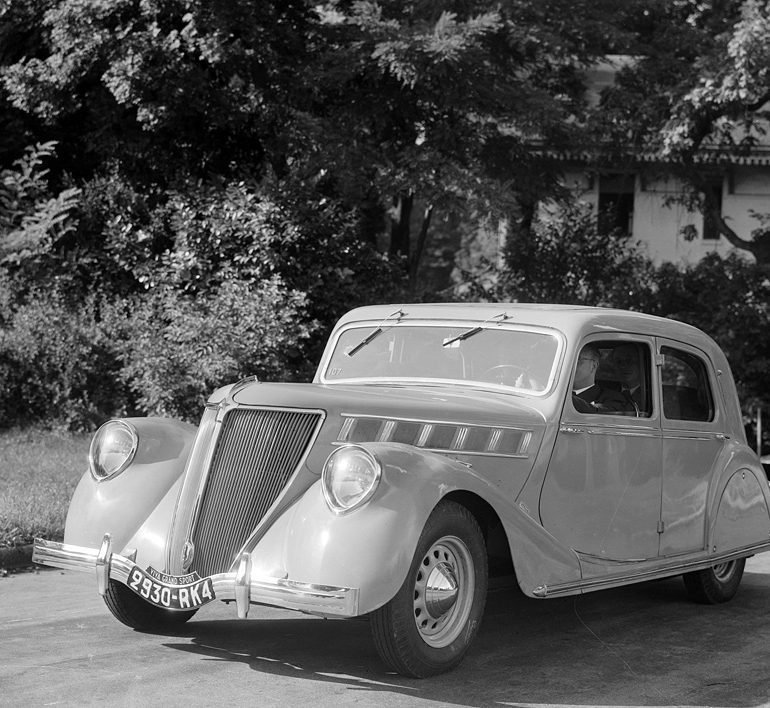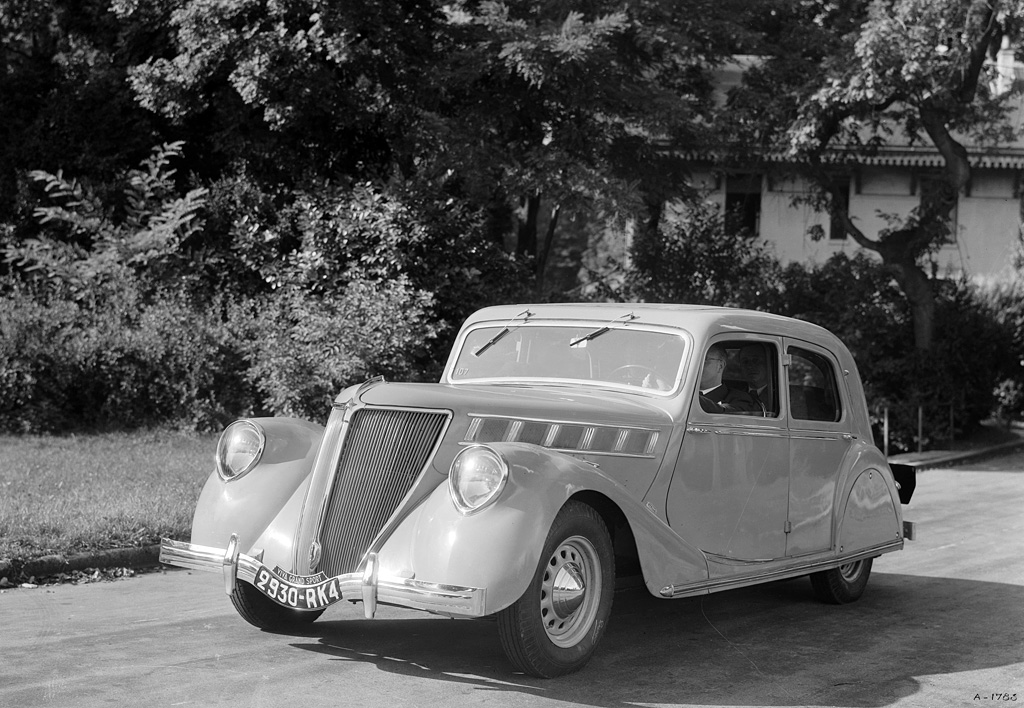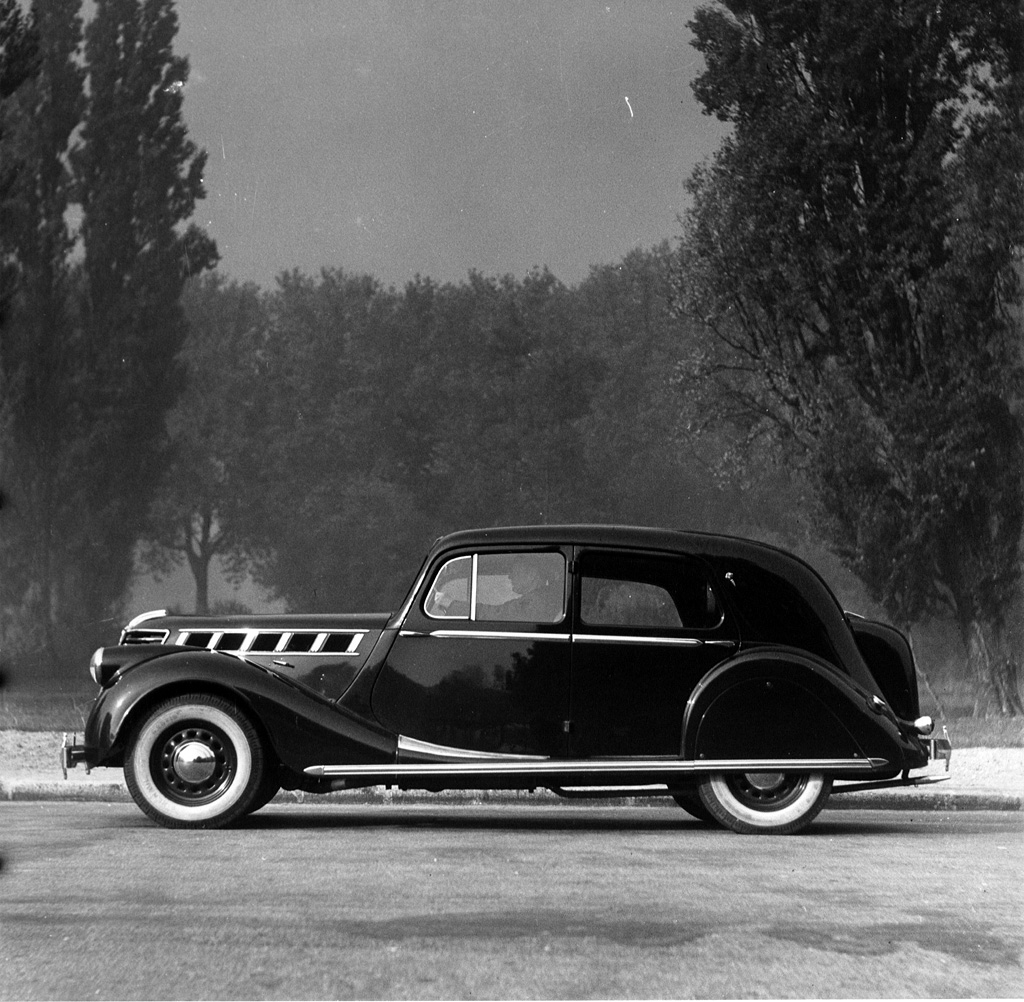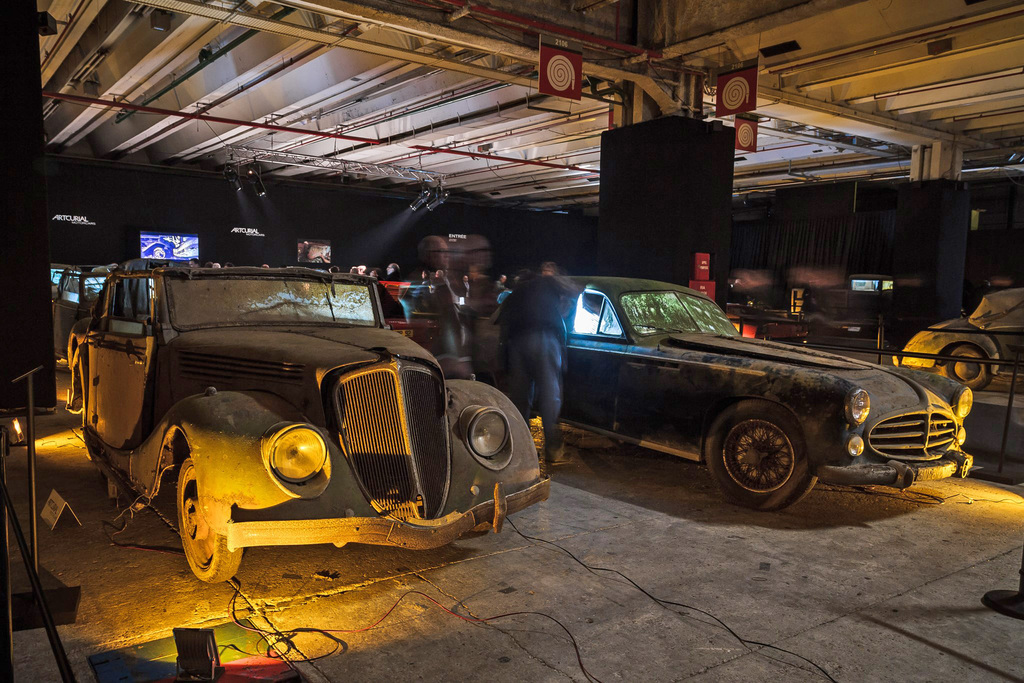1934 Renault Viva Grand Sport
In the 1930s, the most fashionable concepts were aerodynamics, power and speed. The Viva Grand Sport, an upmarket model by Renault, featured a host of original styling and technical features in all 3 areas.
“Hyperaerodynamics” is born
The 1930s was a period of technological innovation, with the 1st intercontinental flights, fast trains, and a growing number of motorsports events. The 1934 Paris Motor Show reflected this technology boom. Renault presented the Viva and Nerva ranges with their 6- and 8-cylinder engines, both of which illustrated the benefits of scientific progress. The short and lively Viva Sport was an elegant, powerful coupé, while Viva Stella was a full-sized, sculptural sedan.
The two trends – Sport and Stella – were reconciled 1 year later to create Viva Grand Sport. A well balanced car with wraparound lines, Viva Grand Sport was available in open and closed versions. With the wider, streamlined bodywork, inspired by the aerospace industry, Renault created the “Hyperaerodynamics” label.
Weighty concepts… and materials
The 1st Grand Sport was designed for demanding customers, with its dazzling styling features. Adverts associated it with the Caudron-Renault Rafale aircraft designed by Marcel Riffart.
The innovative, enveloping bodywork and headlights built into the wings represented a breakaway from conventional vehicle designs. The interior was made more comfortable by doing away with the steps. The front bench seat was large enough for 3 people.
With its powerful 6-cylinder engine, the Renault Viva GS was excellent value for money and more affordable that its stable mate, the Nerva. In 1935, the capacity of the Grand Sport engine was increased to 4,085 cm3, with a top speed of 135 kph..
Transformations in power and design
The price of Viva Grand Sport ranged from FF 39,000 for the sedan to FF 44,000 for the convertible. The high price of this executive model was justified by continuous improvements in design and a generous array of equipment.
In 1937, the Viva Grand Sport gained a new American-style windbreaker radiator grille and a hood with 5 slits on the side. The curving, streamlined headlamps formed a seamless line with the vehicle fenders.
The last version of the Viva introduced major upgrades. The front end gained chrome trim while the headlamps took on rounder lines. This version developed 95 hp at 3,000 rpm.
Viva Grand Sport established itself at the top of the Renault range after the economic crisis, to the detriment of the costly Nerva. Powerful and easy to drive, it held on to the top place until summer 1939. Pushed off its pedestal by the impending war, it disappeared, leaving no heirs.
| type | Series Production Car |
Auction Sales History
Very rare model. Original cabriolet. Top of the range Renault. No reserve. One of five known examples. This four-seater Viva Grand Sport cabriolet was sold to Roger Baillon in 1963 by a certain M. Brelot, from the department of Jura. The file includes the period transfer certificate and an old registration document, no longer valid, for former registration number 498 R 39. The car is a restoration project, appearing to be complete, retaining its dashboard instruments, 4-litre six-cylinder side-valve engine and frame for the hood.
Auction Source: The Baillon Collection at Rétromobile







